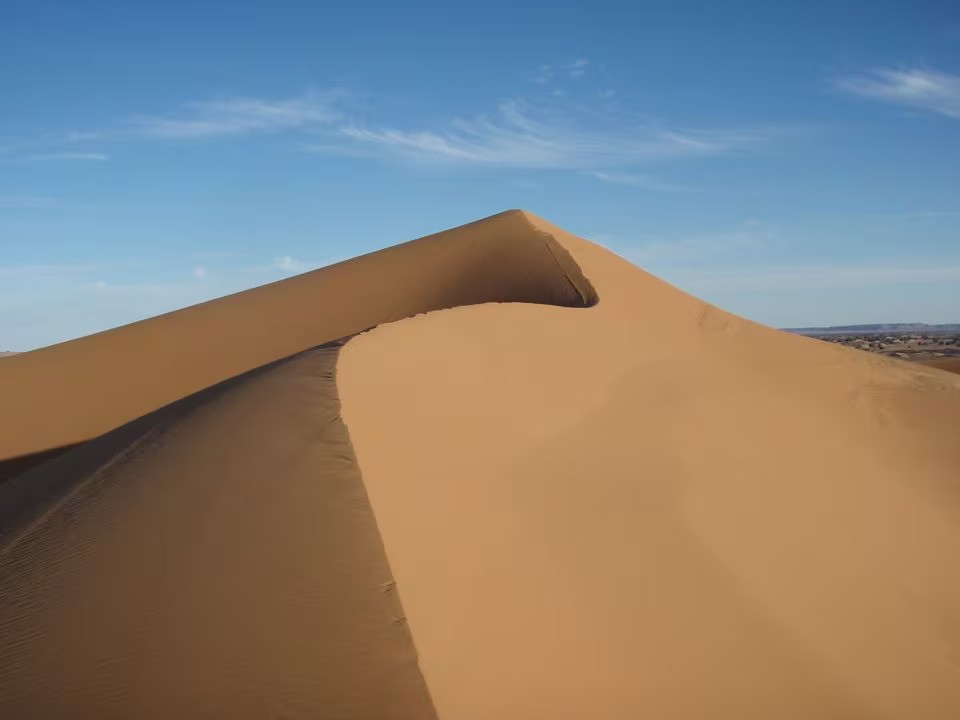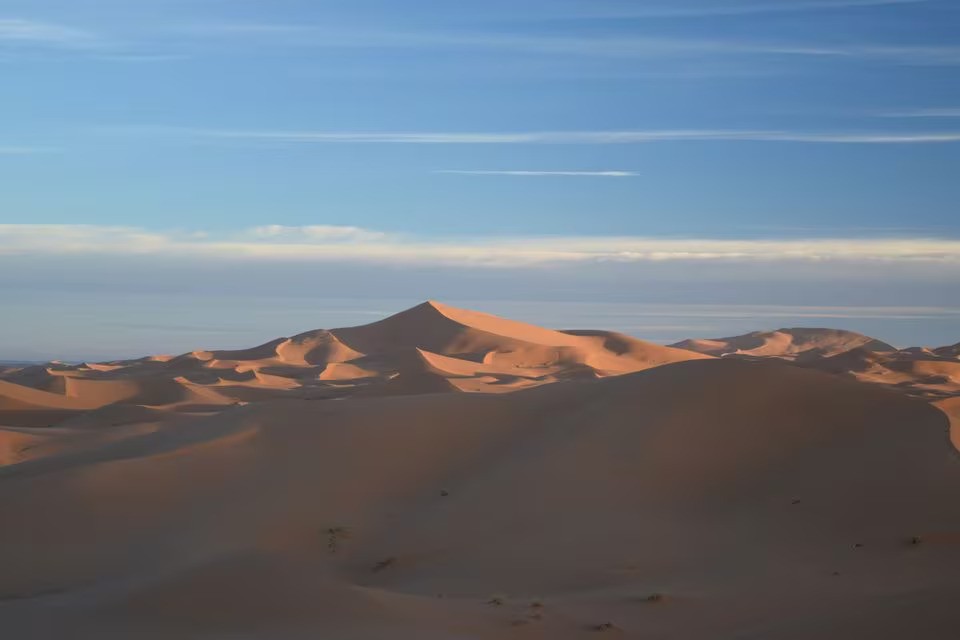Researchers Unveil Mysteries Of Earth's Majestic Desert Star Dunes
Researchers unveil mysteries of Earth's majestic desert star dunes. These pyramid-shaped formations, reaching heights of up to 1,000 feet (300 meters), feature arms extending from a central peak, giving them a star-like shape when viewed from above.
Author:Rhyley CarneyReviewer:Paula M. GrahamMar 04, 20241.5K Shares21K Views

Researchers unveil mysteries of Earth's majestic desert star dunes. In the deserts, star dunes stand out as remarkable wonders. These pyramid-shaped formations, reaching heights of up to 1,000 feet (300 meters), feature arms extending from a central peak, giving them a star-like shape when viewed from above.
On Monday, scientists presented the initial comprehensive examination of a star dune, unveiling insights into the internal structure of these geological marvels. They revealed that the formation of these dunes occurs more rapidly than previously thought, yet still takes many centuries to complete.
The study focused on a star dune named Lala Lallia, which translates to "highest sacred point" in the local Berber language. This dune is located in eastern Morocco, within the Sahara Desert, specifically in a small sand sea known as Erg Chebbi. It sits approximately 3 miles (5 km) from the town of Merzouga, near the border with Algeria.
Standing at about 330 feet (100 meters) above the surrounding dunes, Lala Lallia spans approximately 2,300 feet (700 meters) in width and contains around 5-1/2 million metric tons of sand.
The researchers utilized ground-penetrating radar to investigate the interior of the dune and employed luminescence dating to determine the formation timeline of Lala Lallia. This dating method relies on the energy trapped within sand grains. The findings revealed that Lala Lallia took approximately 900 years to form, with an annual accumulation of roughly 6,400 metric tons as wind continuously transports sand across the desert.
Star dunes constitute just under 10% of the dunes found in Earth's deserts and are the tallest among them, surpassing other types such as crescent-shaped barchan dunes and long, straight linear dunes. These dunes have also been observed on Mars and Saturn's large moon, Titan.
"I first encountered star dunes in Namibia 20 years ago, and was instantly amazed at the size of them. I have a vivid memory of the long climb to the top, struggling up very loose sand in the heat of the day," said geographer Geoff Duller of Aberystwyth University in Wales, co-author of the study published in the journal Scientific Reports, opens new tab.
“„I find desert dunes very beautiful. The sight of the sinuous curves, and the way that the light and shadow changes with the sun mean that they always look different, whether that is in the cool of the morning, the midday sun or near sunset. The different colors of sand in different deserts are also very striking, with yellow, white, red, and even black dunes in different parts of the world.- Geoff Duller
The ground-penetrating radar unveiled the layers within the Lala Lallia dune, illustrating its construction process over time through the accumulation of sand. It also revealed that certain parts of its internal structure resembled other types of dunes.
"Star dunes are formed in areas with complex wind regimes, which means winds blowing from different directions, and net sand accumulation, points within the desert where big piles of sand can be blown around to form giant dunes," said Birkbeck University of London sedimentologist and study co-author Charlie Bristow.
The researchers also determined that Lala Lallia is gradually moving westward at a rate of about 1.6 feet (0.5 meters) per year. While numerous star dunes are known today, only one ancient specimen has been discovered and preserved as sandstone in the geological record, dating back approximately 250 million years in Scotland. By unveiling their internal structure, the researchers stated that their findings offer guidance for geologists to identify more sandstone remnants of ancient star dunes.
The largest star dunes on Earth are located in the Badain Jaran Desert in western China. Star dunes can also be found in various locations, including the Namib Sand Sea in Namibia, large sand seas in Algeria such as the Grand Erg Oriental and Grand Erg Occidental, and the Rub' al Khali in Saudi Arabia. In North America, Great Sand Dunes National Park in Colorado contains a series of them.
“„They form extraordinary and awe-inspiring landscapes. From the ground they can be intimidating, mobile mountains of sand.- Charlie Bristow

Rhyley Carney
Author

Paula M. Graham
Reviewer
Latest Articles
Popular Articles
